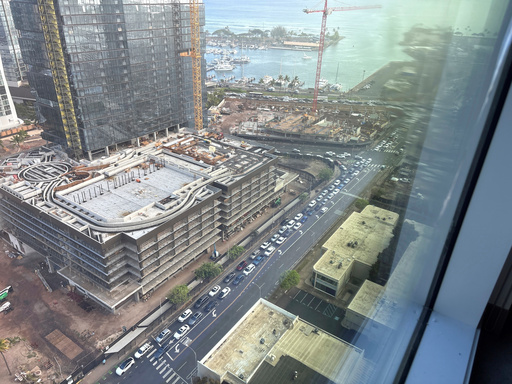In Honolulu, David Sun-Miyashiro was alerted by his phone to a potential tsunami from a massive earthquake across the Pacific while he was safe at home on the 31st floor of his apartment building. With ample time before any waves might reach Hawaii, he decided to pick up his father, who needed a ride to the airport later. However, he quickly found himself ensnared in congestion within his Kakaako neighborhood. After an hour of moving only a few blocks, he abandoned his car and walked home with his young son. Fortunately, the tsunami from the 8.8 magnitude quake near Russia caused minimal damage, but it exposed issues with the current evacuation strategies that officials say need improvement.
The primary complication was traffic. The quake struck during afternoon rush hour, and the extended warning time worsened the congestion, hindering evacuation efforts that otherwise proceeded smoothly. Sun-Miyashiro noted that densely populated areas face paralysis when everyone tries to use their cars simultaneously.
Officials identified ‘over-evacuation’ as an issue. Some tourists headed for higher ground when they could have taken shelter on the upper floors of hotels per evacuation plans. Residents often rushed to stores for supplies or home to meet family members before evacuating. This confusion may have arisen from unclear evacuation zones, though Tuesday’s event was a standard evacuation, causing some living in extreme zones mistakenly to flee unnecessarily, causing additional chaos.
Ed Sniffen, director of the state Department of Transportation, expressed no regrets over providing early warnings but emphasized the need for better public education on time management during such events. Advance warning led people to overreact, with some even venturing out needlessly to fill gas or buy supplies, instead of remaining in safe spots.
He suggested that staying put in a safe location would significantly ease road congestion, allowing those in inundation zones smoother evacuations. Tourists should be better informed about walking to higher ground as a viable option.
State Representative Adrian Tam highlighted the need for better organization in Waikiki, a popular tourist spot with limited exit routes, underscoring this incident as a “warning sign” for improved traffic management strategies. He expressed gratitude that the event wasn’t as severe but stressed the need to resolve the gridlock issues.
Hawaii, situated on the Pacific Plate, is accustomed to time for preparation against tsunamis, primarily originating from distant earthquakes along the Pacific’s Ring of Fire including locations like Japan, Alaska, and Chile, providing hours for evacuation.
On the day in question, authorities ensured a military road from Oahu’s Waianae Coast was available, while a private road on Maui also opened for evacuation, recalling the recent devastating wildfire in Lahaina.
Jake Bacon, an Arizona-based freelance photographer vacationing in Oahu, described the evacuation experience as orderly and patient despite the traffic delays, contrasting sharply with his experiences during wildfire evacuations. He noted the calmness of people waiting for hours in traffic, without honking horns or panicking, emphasizing a collective dignified response that he appreciated.
Overall, while the threat dissipated with minimal impact, Hawaii’s officials acknowledge the need for an improved approach to managing evacuations in future emergencies.


